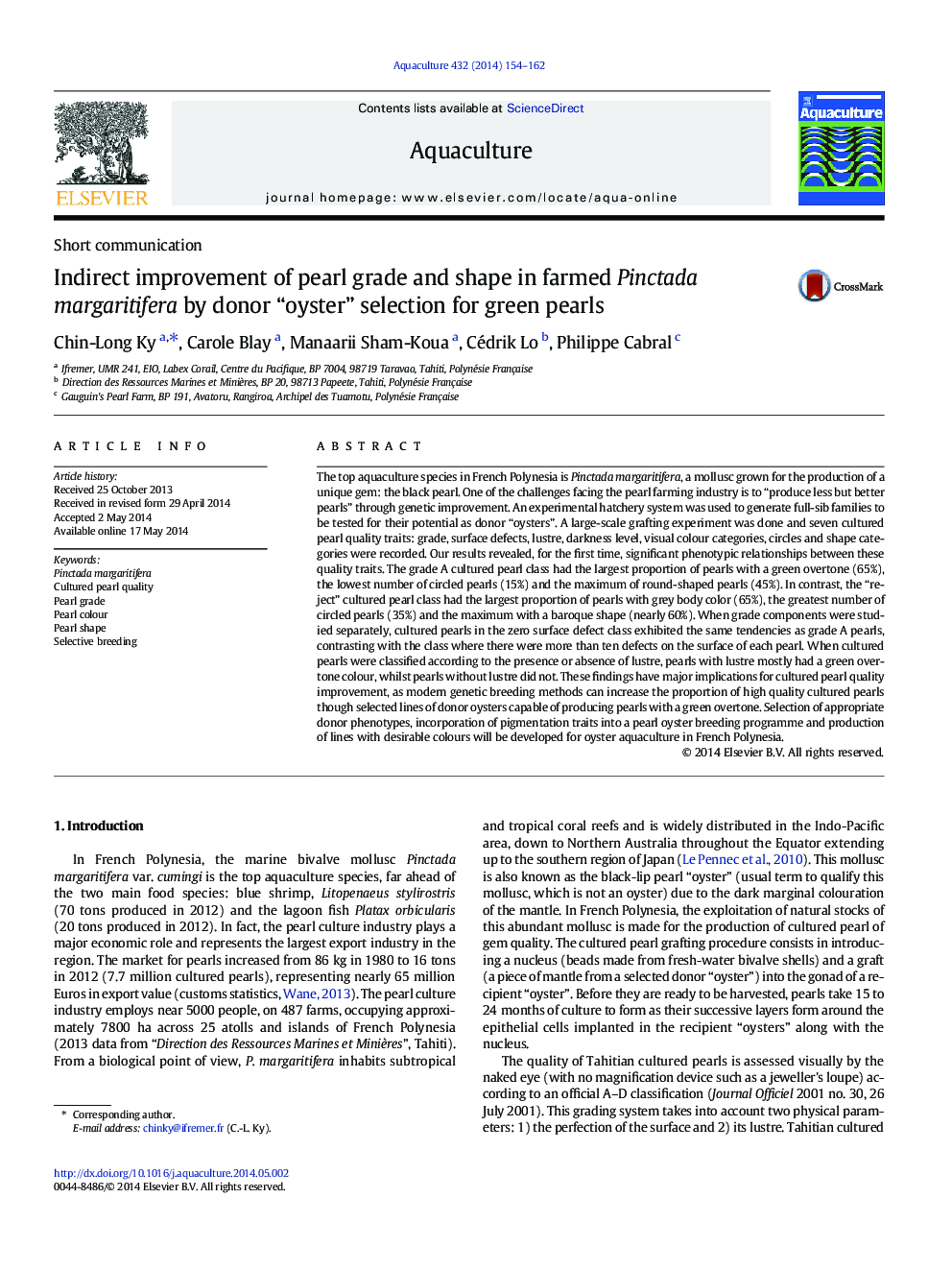| کد مقاله | کد نشریه | سال انتشار | مقاله انگلیسی | نسخه تمام متن |
|---|---|---|---|---|
| 2421810 | 1552855 | 2014 | 9 صفحه PDF | دانلود رایگان |

• Correlation between pearl grade with colour and shape exists in P. margaritifera.
• Grade A pearls were related to green overtone, round shape and uncircled pearls.
• Pearls in reject class were related to more grey body color and circled pearls.
• Selection for green/peacock pearl increases the grade A pearl rate.
The top aquaculture species in French Polynesia is Pinctada margaritifera, a mollusc grown for the production of a unique gem: the black pearl. One of the challenges facing the pearl farming industry is to “produce less but better pearls” through genetic improvement. An experimental hatchery system was used to generate full-sib families to be tested for their potential as donor “oysters”. A large-scale grafting experiment was done and seven cultured pearl quality traits: grade, surface defects, lustre, darkness level, visual colour categories, circles and shape categories were recorded. Our results revealed, for the first time, significant phenotypic relationships between these quality traits. The grade A cultured pearl class had the largest proportion of pearls with a green overtone (65%), the lowest number of circled pearls (15%) and the maximum of round-shaped pearls (45%). In contrast, the “reject” cultured pearl class had the largest proportion of pearls with grey body color (65%), the greatest number of circled pearls (35%) and the maximum with a baroque shape (nearly 60%). When grade components were studied separately, cultured pearls in the zero surface defect class exhibited the same tendencies as grade A pearls, contrasting with the class where there were more than ten defects on the surface of each pearl. When cultured pearls were classified according to the presence or absence of lustre, pearls with lustre mostly had a green overtone colour, whilst pearls without lustre did not. These findings have major implications for cultured pearl quality improvement, as modern genetic breeding methods can increase the proportion of high quality cultured pearls though selected lines of donor oysters capable of producing pearls with a green overtone. Selection of appropriate donor phenotypes, incorporation of pigmentation traits into a pearl oyster breeding programme and production of lines with desirable colours will be developed for oyster aquaculture in French Polynesia.
Journal: Aquaculture - Volume 432, 20 August 2014, Pages 154–162